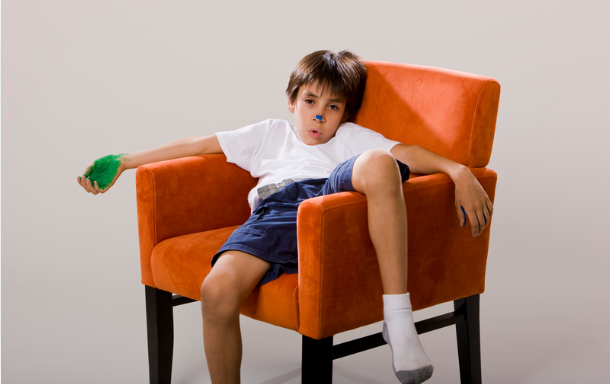Imagine a world where every social interaction feels like wading through quicksand, each word and glance draining your energy. This is the reality many autistic individuals experience. For parents and caregivers, understanding and supporting a child with autism through the challenges of social exhaustion is crucial.
Definition and Impact
Social exhaustion, also known as social fatigue, is a common experience for many individuals with autism. It occurs when the cognitive and sensory demands of social interactions become overwhelming, leading to feelings of mental and physical fatigue. This can have a profound impact on an individual’s well-being, affecting their mood, behavior, and overall quality of life.
For autistic individuals, social exhaustion often results from challenges related to sensory processing, communication difficulties, and the need to navigate social norms and expectations. The sensory overload experienced in social settings, combined with the cognitive effort required to interpret nonverbal cues and maintain conversations, can quickly drain their energy reserves.
Factors Contributing to Social Exhaustion
Several factors contribute to social exhaustion in individuals with autism, making it a multifaceted issue that requires careful consideration. Difficulty with nonverbal communication poses a significant challenge, as autistic individuals may struggle to interpret facial expressions, body language, and vocal intonations accurately.
Moreover, the adjustment to changing environments and social expectations can also contribute to social exhaustion. Returning to in-person interactions, especially after a period of remote work or isolation, can be particularly taxing as individuals readapt to the nuances of face-to-face communication, office dynamics, and social gatherings.

Social Exhaustion in Autism
Social exhaustion in autistic individuals extends beyond typical social fatigue and is closely linked to autism burnout, a state of physical, emotional, and mental depletion that can significantly impact well-being. In this section, we will explore the unique challenges faced by autistic individuals, the role of sensory overload, and the difficulties related to nonverbal communication in the context of social exhaustion.
Unique Challenges for Autistic Individuals
Autistic individuals encounter a range of unique challenges in social settings that can contribute to feelings of exhaustion. The need to navigate complex social cues, interpret nonverbal communication, and engage in reciprocal conversations can be mentally taxing. Additionally, differences in processing sensory information further complicate social interactions, leading to increased stress and fatigue.
Role of Sensory Overload
Sensory overload plays a significant role in driving social exhaustion among autistic individuals. Social environments are often filled with various sensory inputs, including loud noises, bright lights, strong smells, and tactile sensations. For individuals with heightened sensitivity to sensory stimuli, which is common in autism, these sensory inputs can quickly become overwhelming and lead to fatigue and distress.
Nonverbal Communication Difficulties
Understanding and interpreting facial expressions, body language, and tone of voice are essential components of effective communication, yet these cues can be particularly challenging for individuals on the autism spectrum. The inability to accurately interpret nonverbal signals can lead to misunderstandings, miscommunications, and increased cognitive load during social exchanges for autistic individuals.

Coping Strategies
It is essential to employ effective coping mechanisms to enhance well-being and promote mental health. Some approaches can significantly contribute to managing and reducing social exhaustion experienced by individuals with autism. Here are several strategies that have been found to be particularly helpful:
Implementing Regular Sensory Breaks
Implementing regular sensory breaks is crucial for individuals with autism who experience sensory overload in social environments. By taking short breaks in quieter, less stimulating environments, individuals can recharge and prevent sensory fatigue. These breaks provide an opportunity to relax, refocus, and regulate sensory input, promoting emotional well-being and reducing the risk of burnout.
Practicing Self-Advocacy and Boundaries
Practicing self-advocacy and setting boundaries are essential skills for managing social exhaustion. By advocating for their own needs in social interactions, individuals with autism can protect their mental and emotional energy. Asserting boundaries may involve communicating personal limits, expressing discomfort, or requesting accommodations to ensure a comfortable social experience.
Building Supportive Social Networks
Developing connections with understanding and empathetic individuals who respect and accommodate one’s unique needs can provide a sense of belonging and reduce feelings of isolation. Supportive social networks offer a safe space for individuals with autism to be themselves and receive emotional support, allowing them to enhance their resilience, self-esteem, and overall social well-being.
Masking and Its Effects
Masking, also known as camouflaging, refers to the coping mechanism utilized by autistic individuals to conform to neurotypical social expectations and behaviors. While masking may help individuals navigate social interactions more smoothly, it often comes at a significant emotional cost, also leading to social exhaustion.
Understanding Masking in Autism
Masking involves suppressing one’s true identity, interests, and behaviors to mimic neurotypical social norms. This process of camouflaging can manifest in various ways, such as imitating facial expressions, mimicking social cues, and concealing sensory sensitivities. While masking may enable individuals with autism to navigate social situations, it can result in a deep sense of disconnection from one’s authentic self.
Emotional Toll of Masking
The practice of masking can have profound emotional repercussions on individuals with autism. Constantly suppressing one’s natural behavior and conforming to societal expectations can lead to feelings of identity crisis, anxiety, and emotional exhaustion. The pressure to mask can create a sense of alienation and internal conflict, as individuals grapple with the tension between societal conformity and self-expression.

Strategies for Reducing Masking
To alleviate the burden of masking and mitigate the associated social exhaustion, it is essential for individuals with autism to explore strategies that promote authenticity and self-acceptance. Some effective approaches for reducing masking include:
- Self-Acceptance: Encouraging self-compassion and self-acceptance can foster a sense of inner peace and authenticity.
- Selective Masking: Learning when and where to engage in masking behavior, and prioritizing moments of genuine self-expression.
- Therapeutic Support: Seeking guidance from therapists or support groups that specialize in autism can provide valuable tools for managing masking and its emotional toll.
By addressing the challenges of masking and acknowledging its effects on individuals with autism, we can cultivate a more inclusive understanding of social exhaustion within the autism community. It is through awareness, acceptance, and support that we can create a more compassionate environment for individuals navigating the complexities of masking and its impact on their daily lives.
If you’re looking for autism programs in Maryland that prioritize empathy and support, Hello ABA is here to help. Our team of experienced professionals offers high-quality Applied Behavior Analysis (ABA) therapy tailored to your child’s unique needs. Contact us today to learn more about how our autism programs can make a positive difference in your child’s life!






